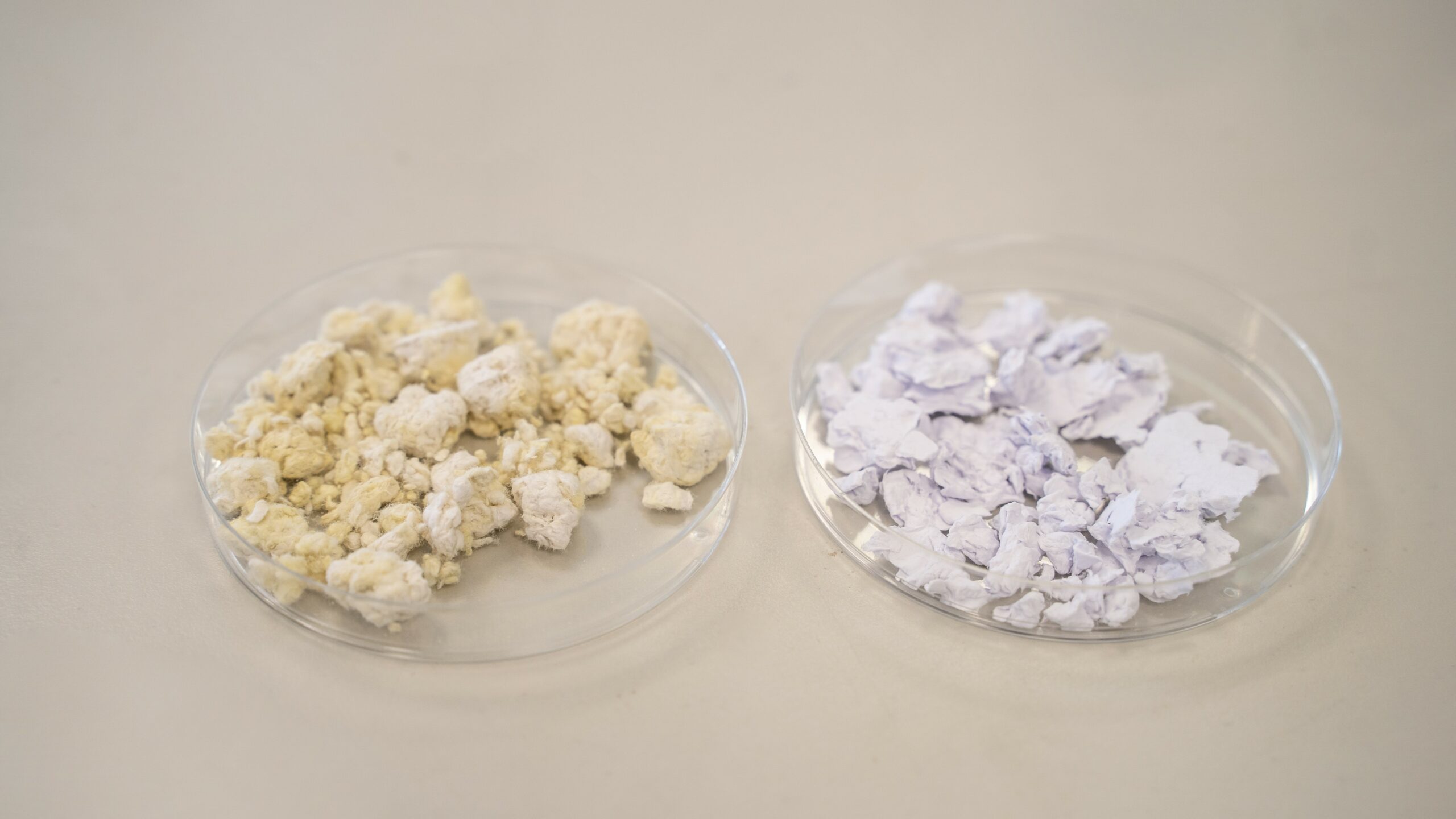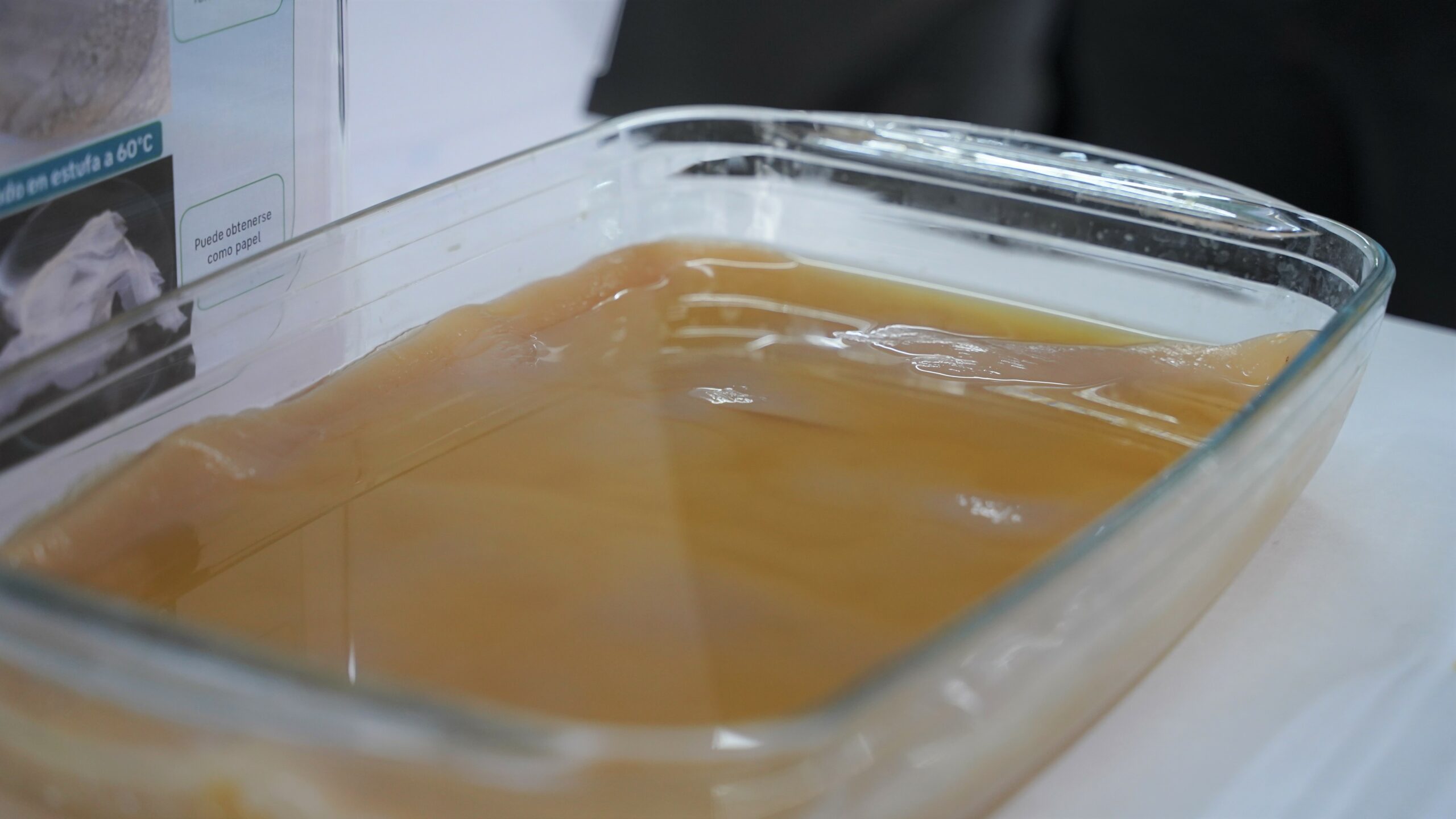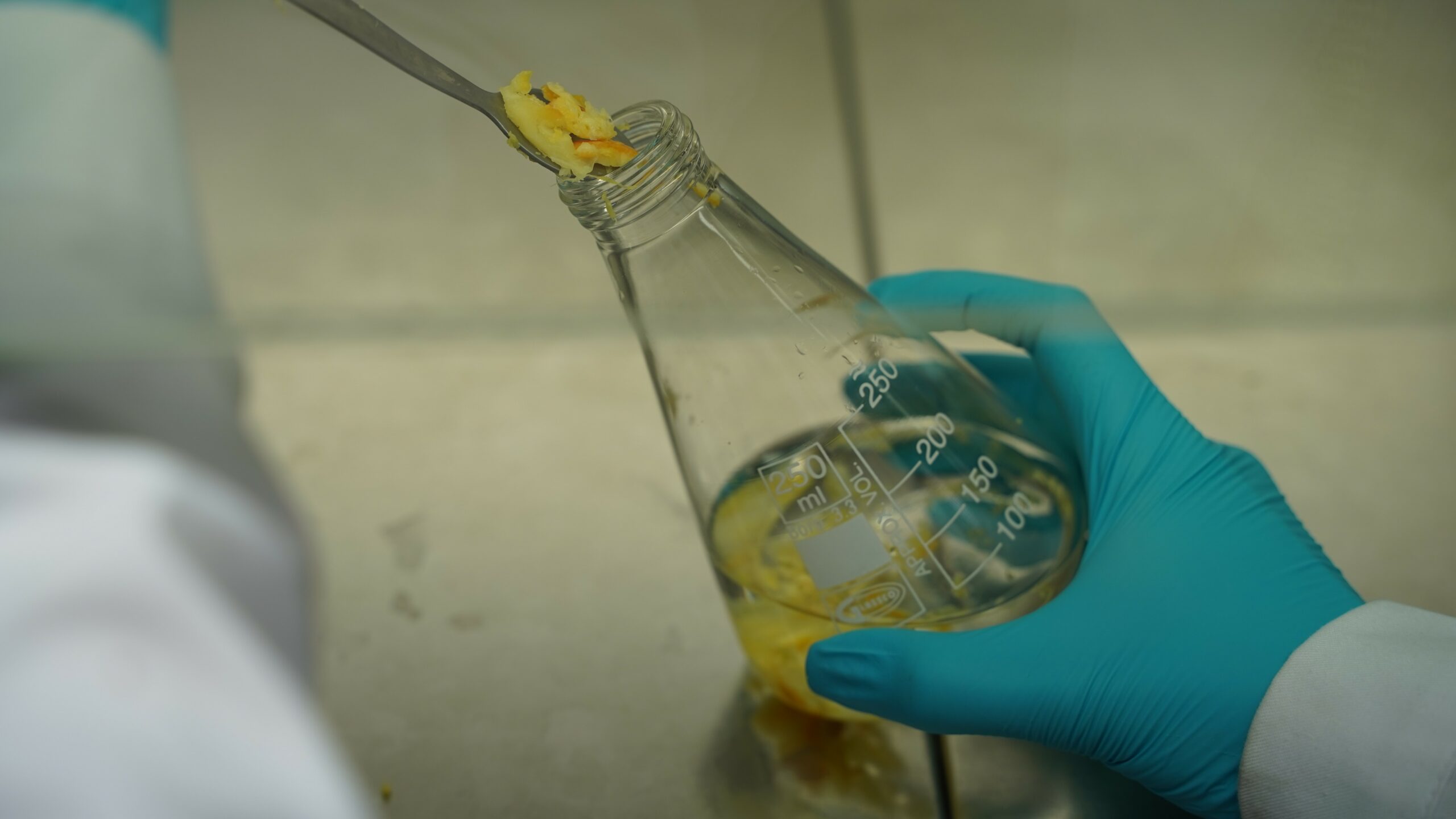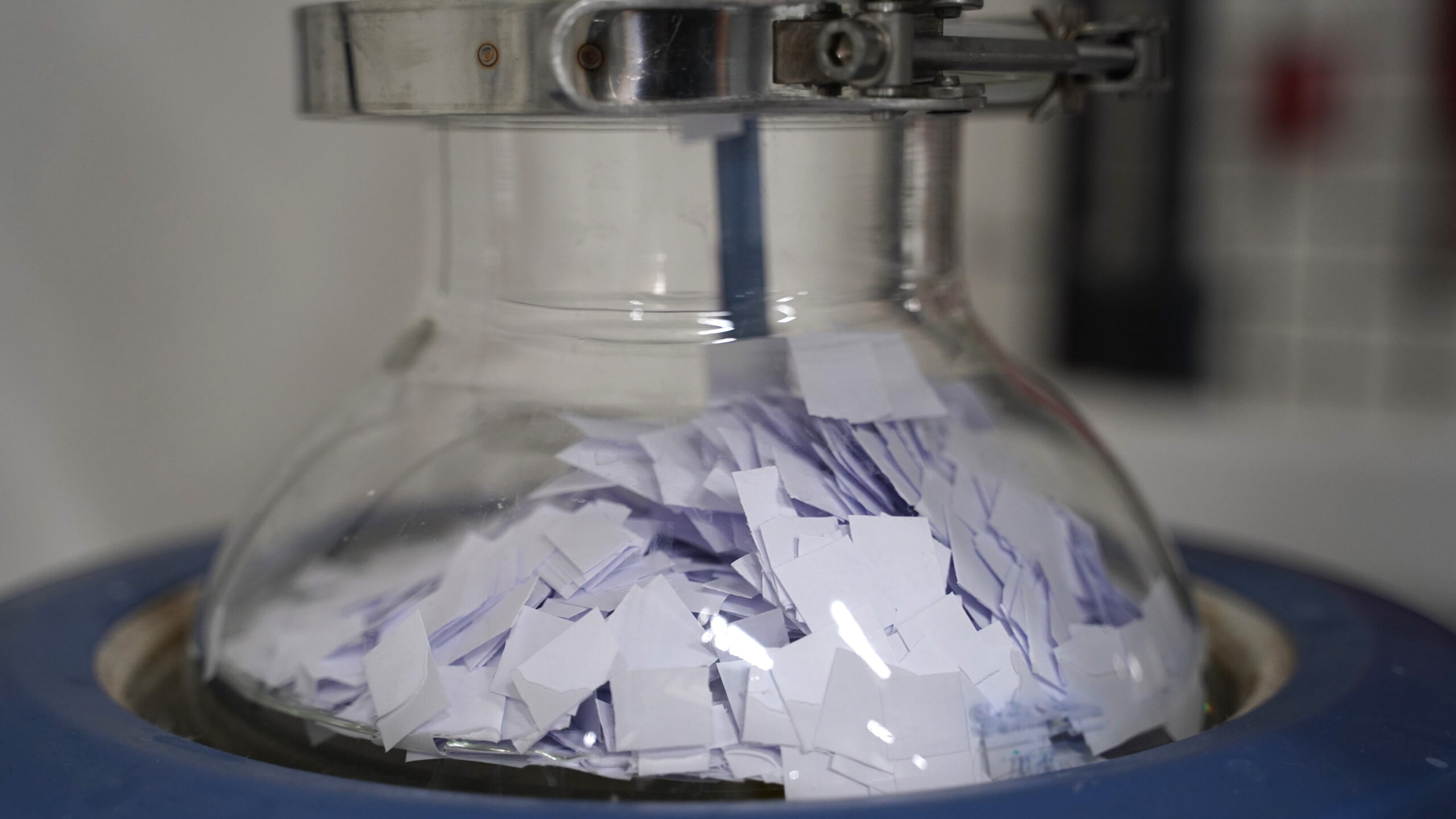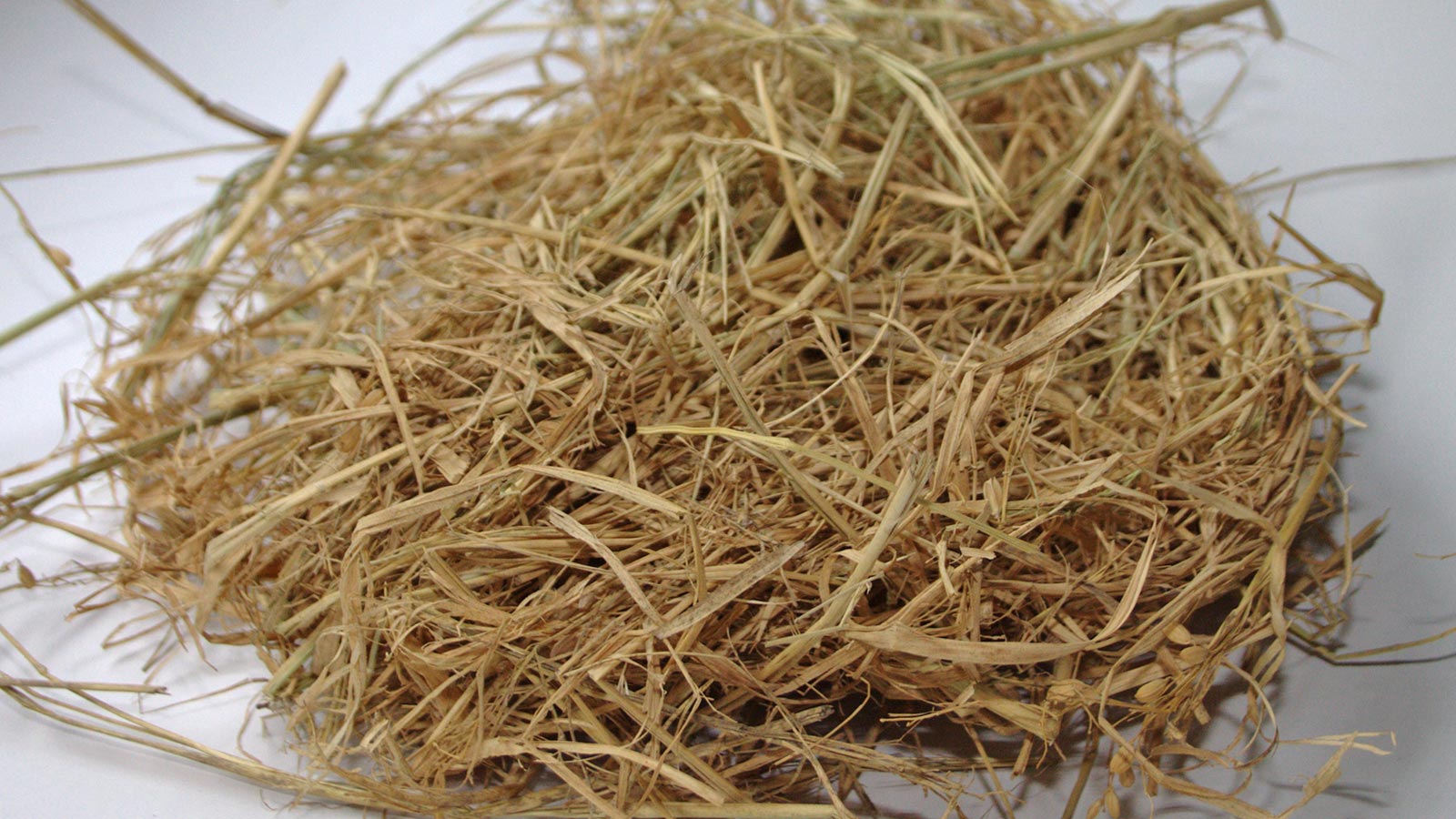ITENE obtains a biopolymer of microbial origin from orange waste and develops an advanced decontamination process for recycled paper to improve its application in food packaging
- Within VALOCEL project, funded by the Instituto Valenciano de Competitividad Empresarial (IVACE), has optimised the production of bacterial cellulose from orange waste to boost its market introduction.
- The research centre has developed a process to eliminate substances that are not suitable for food contact during the paper recycling process.
The ITENE research centre has obtained a biopolymer of microbial origin through the recovery of orange waste and has developed an advanced process for the decontamination of recycled paper to improve its application in food packaging.
In the framework of the VALOCEL project (2022-2023), financed by the Instituto Valenciano de Competitividad Empresarial (IVACE) with Feder funds, ITENE has developed new technologies for the production and recycling of cellulosic products through the manufacture of bacterial cellulose and the elimination of mineral oils.
Specifically, it has optimised a process for the production of bacterial cellulose from orange waste to allow the market introduction of this biopolymer in industrial sectors such as paper, cosmetics, food and pharmaceutical. In addition, it has developed an innovative process to eliminate contaminants present in recycled paper to facilitate its use in packaging or other applications in contact with food.
The Project Manager at ITENE, César Aliaga, explained that the project has aimed to ” address the need to produce and scale up the production of bacterial cellulose from sustainable, economic and improved sources in response to the demand for this biopolymer due to its good mechanical and barrier properties and its high crystallinity and degree of purity, as well as due to the scarcity of industrial processes to produce it”.
To this end, orange peels have been hydrolysed, in other words, their second-generation sugars have been extracted to obtain a broth enriched in sugars as a nutritional source which, once consumed by specific microorganisms, allows bacterial cellulose to be obtained. “This new bacterial cellulose production process generates 76 grams of wet bacterial cellulose per kilo of orange peel or 20 grams of dry cellulose,” explained the researcher.
Thus, the recovery of organic orange waste has been achieved, obtaining a new sustainable material that can be used in packaging and cosmetic applications and that has similar barrier properties to those of commercial bacterial cellulose.
Recycled paper recovery
On the other hand, the project manager stated that VALOCEL has also focused on the elimination of substances unsuitable for food contact that may represent a risk to human health and that may limit the use of recovered cellulosic materials in certain high value-added applications, such as food packaging. This elimination has been carried out in the recycling process itself.
To this end, César Aliaga indicated that “a process has been developed to decontaminate recovered paper from mineral oils, contaminants that can appear during the recycling process“. This process consists of applying polymer beads to the waste paper during the recycling process. Once introduced, these polymer beads adsorb the mineral oils, reaching efficiency values of over 99%.
Furthermore, this research is part of the work carried out by ITENE to obtain sustainable biopolymers and cellulose-based recycled materials with advanced properties that meet the quality requirements demanded by the industry, as well as to develop and adapt technologies to improve the recycling processes of cellulosic materials.
These developments contribute to further progress in increasing recycling rates in line with the objectives of Spanish Royal Decree on Packaging and Packaging Waste, which establishes paper recycling rates of 75% by 2025 and 85% by 2030.
